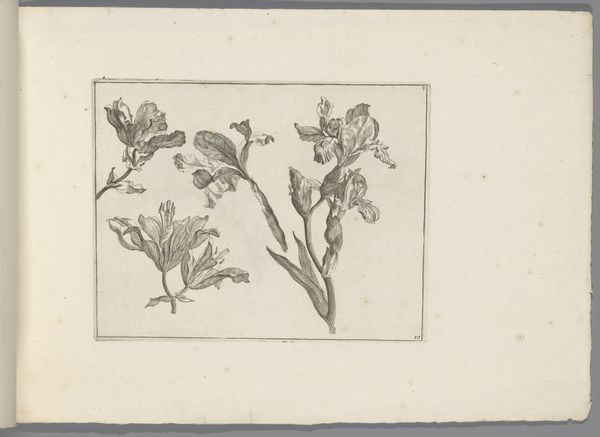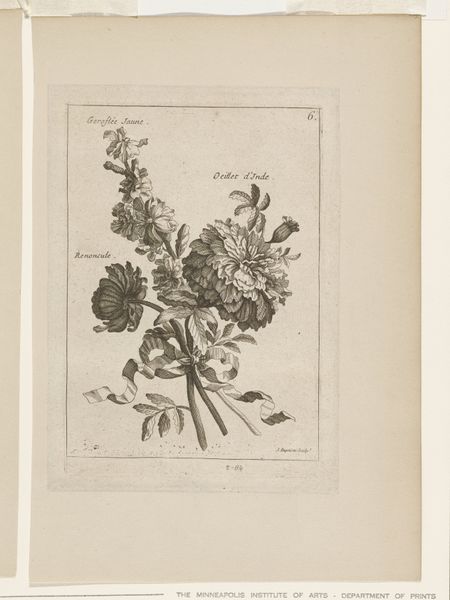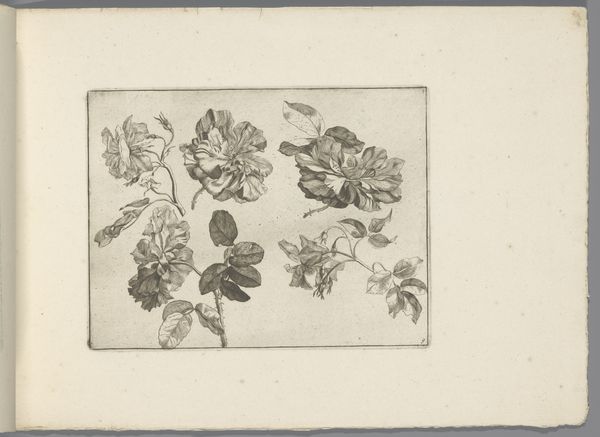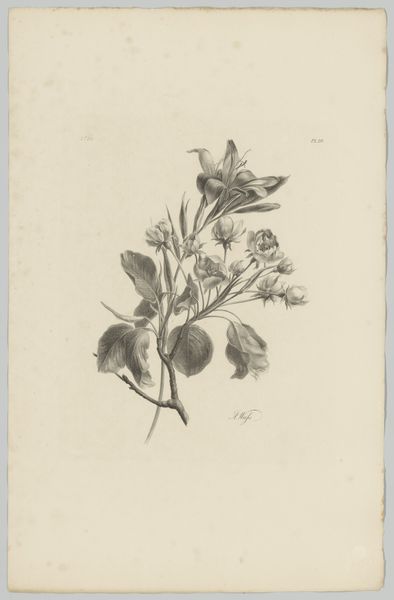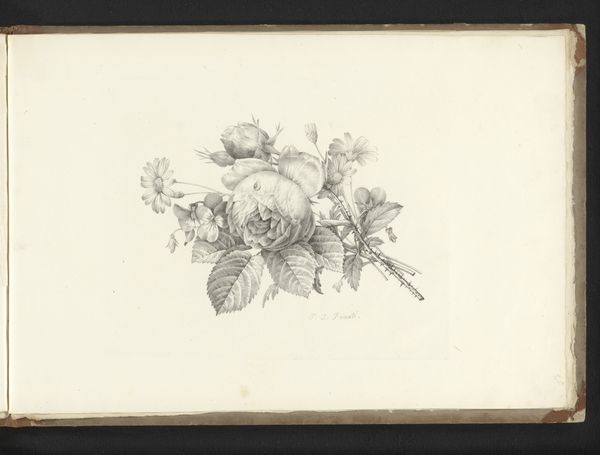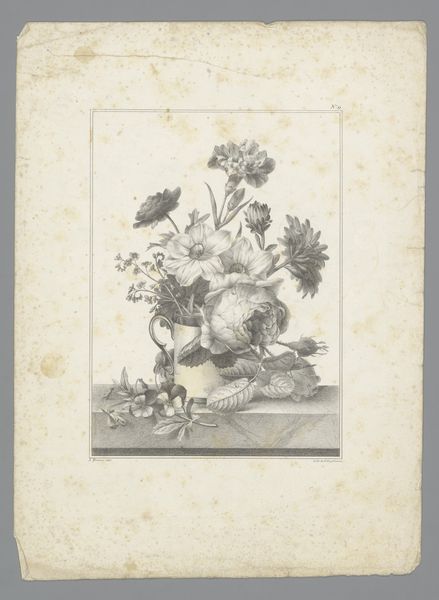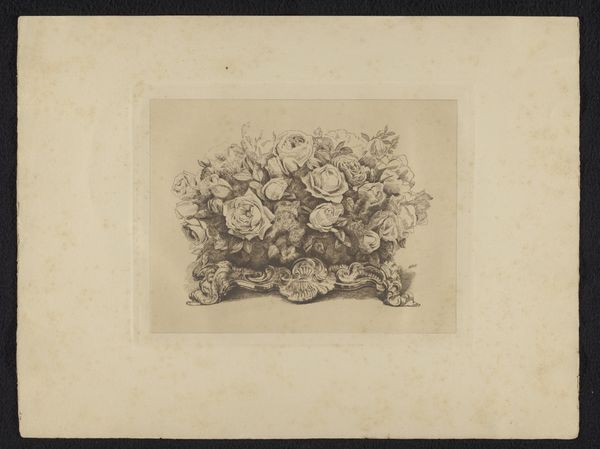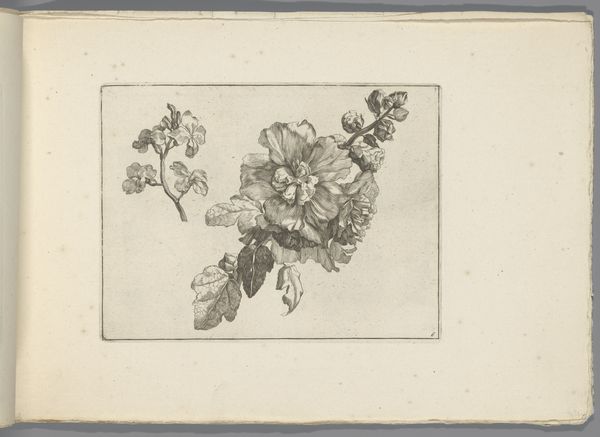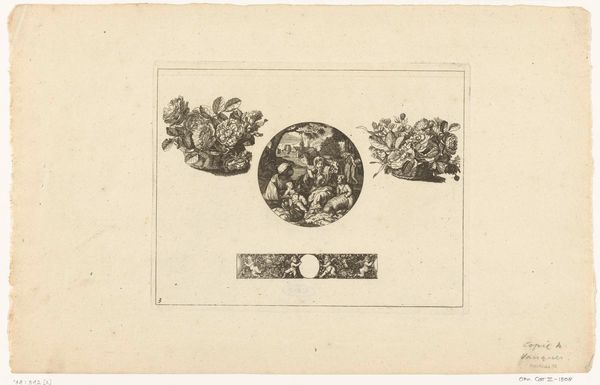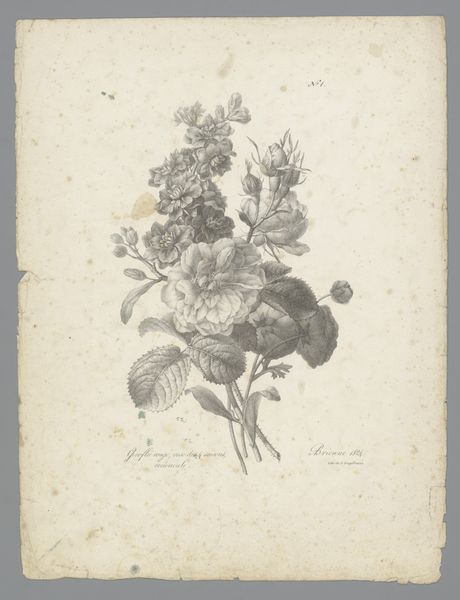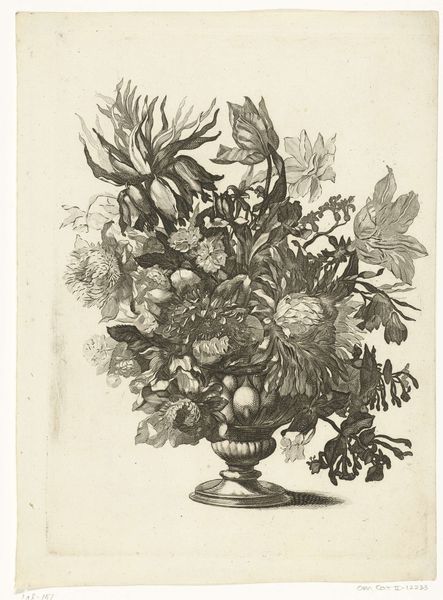
Boeket met koolroos, Spaanse jasmijn en scharlaken fuchsia 1824
0:00
0:00
augustepiquetdebrienne
Rijksmuseum
drawing, paper, ink
#
drawing
#
paper
#
ink
#
coloured pencil
#
academic-art
#
realism
Dimensions: height 266 mm, width 360 mm
Copyright: Rijks Museum: Open Domain
Editor: This drawing, “Boeket met koolroos, Spaanse jasmijn en scharlaken fuchsia” by Auguste Piquet de Brienne, made in 1824 using ink on paper, is beautifully rendered. It looks almost photographic in its detail. What stands out to you most about it? Curator: Well, let's think about the ink itself, the material. The subtle variations in tone weren't easily achieved. How does Brienne's choice of using solely ink to depict such varied floral textures speak to the printmaking techniques and reproductive technologies emerging at that time? Editor: That's a perspective I hadn't considered. So you're saying the limitations of the material, in a way, informed the meticulous nature of the drawing? Was it intended as a preparatory study perhaps? Curator: Possibly, but also think about the paper. Its quality, its cost… It points to a certain level of patronage. This wasn’t a quick sketch on scrap paper. How might the artist’s access to these materials reflect their social standing, and the status of botanical illustration in the 19th century? Editor: Right, the paper provides additional information, I understand now. Were drawings like this often intended for reproduction as prints? Curator: Exactly! The labor involved in creating such detail makes reproduction a likely intent. How does the drawing, as a reproducible image, play into the wider circulation of scientific knowledge and aesthetic appreciation of botany? Editor: That's fascinating; I had assumed it was simply a beautiful floral study, not considering its material and production contexts. I'll definitely look at art with that in mind moving forward. Curator: And that shift in perspective helps us better appreciate both the beauty and the historical significance.
Comments
No comments
Be the first to comment and join the conversation on the ultimate creative platform.
